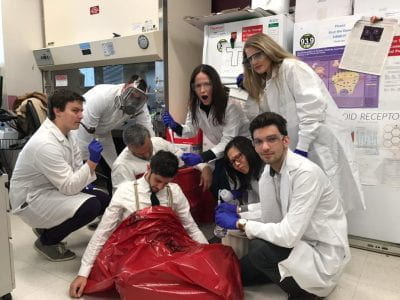Main Discipline(s):
Main Professional Societies:
Affiliation(s):
- Behavioral and Molecular Neuroscience
- Society for Neuroscience
- National Neurotrauma Society
- Wayne State University, Department of Psychiatry and Behavioral Neurosciences
- Detroit VA Medical Center
The primary objective of my research program is to investigate the synaptic effects of traumatic stress and traumatic brain injury (TBI) on drug action, as it pertains to the neuroplastic response underlying the development of pain and addiction behaviors. Specifically, my lab aims to measure neuroplastic changes structurally, as in dendritic spine formation, dendritic morphology, branching and spine density; behaviorally, as in alterations in pain symptoms, and drug intake/preference; and functionally, as in the activation of molecular pathways that regulate neuronal signaling. My work at WSU began with examining the role of TBI in mediating post-injury neuronal sensitivity to ethanol. Most recently, I have initiated novel studies to study the influence of opioid exposure on TBI outcomes, including behavioral and cellular measures related to pain, oxidative stress and neuroinflammation.
My research program spans two broad fields of neuroscience, traumatic brain injury and substance abuse. This combination of fields was a direct result of my past investigative experiences in traumatic brain injury research (before graduate school) and training in the alcohol field during my postdoctoral fellowship. My lab was one of the first to combine these areas of study in a preclinical model, despite overwhelming clinical evidence linking brain injury and substance abuse.
We have recently begun to examine translational interventions for TBI that are based on my preclinical work. My goal is to participate in clinical studies that implement these interventions in order to treat those that suffer from pain and addiction behaviors resulting from TBI.
I’m not sure I could narrow it down to one favorite! I have crossed paths with many incredible people and I try to learn something from everyone I meet. My father has been a significant influence on me- teaching me to work hard and do the right thing always because, “that’s the way it’s done.”



